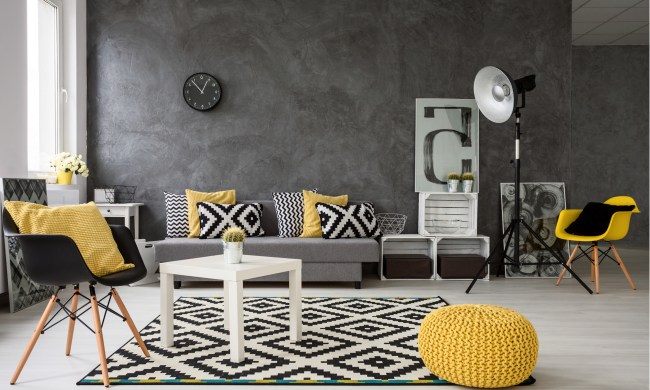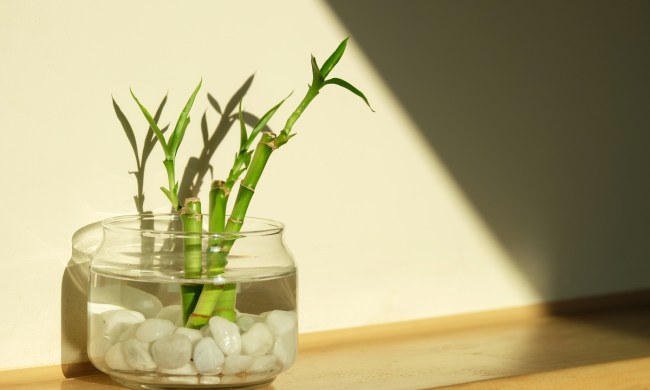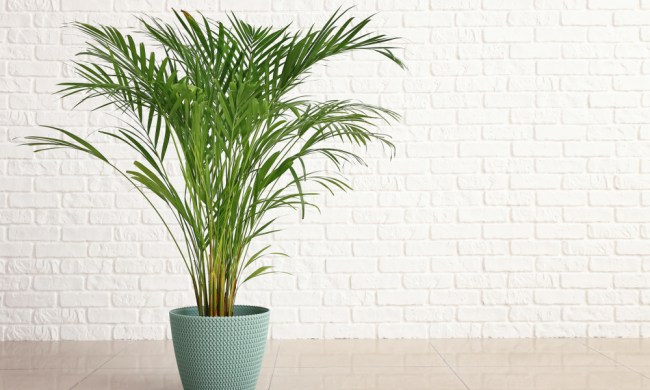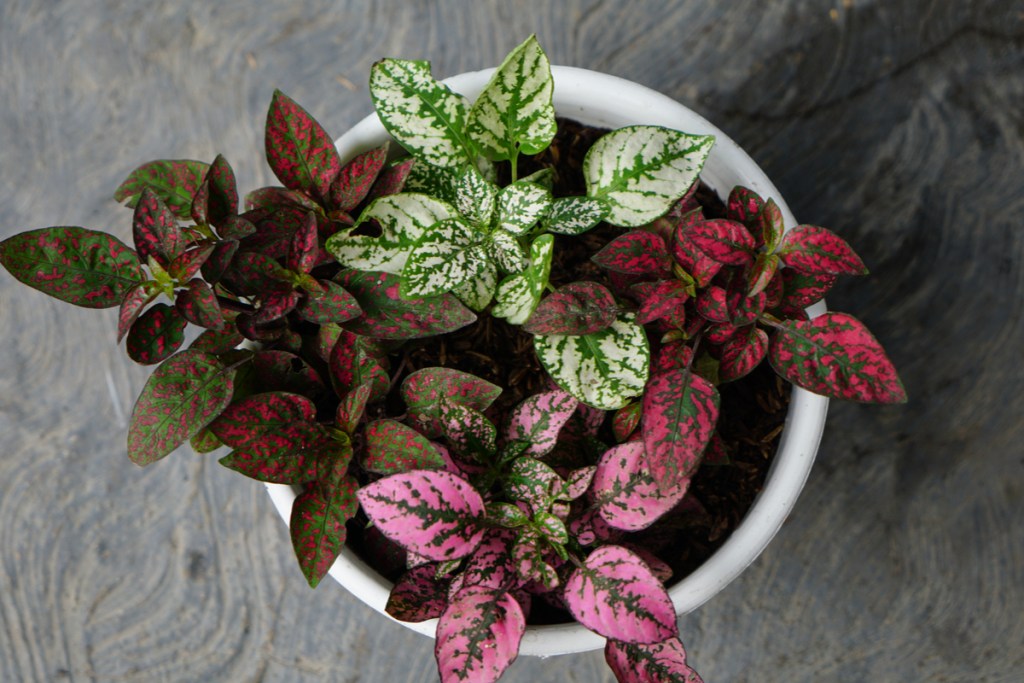
Houseplants have a lot of benefits, like elevating your mood and purifying the air. Arguably their best benefit, though, is that they liven up a room with style and color. That’s why the polka dot plant is so popular. It has bright, colorful foliage that comes in a variety of shades, like pink, white, green, and red. That’s how this lovely plant adds a splash of color to match any decor.
While they certainly brighten up the room, polka dot plants can be finicky, and they do have a strict care routine. We’ll discuss what you need to do to help your polka dot plant thrive indoors.
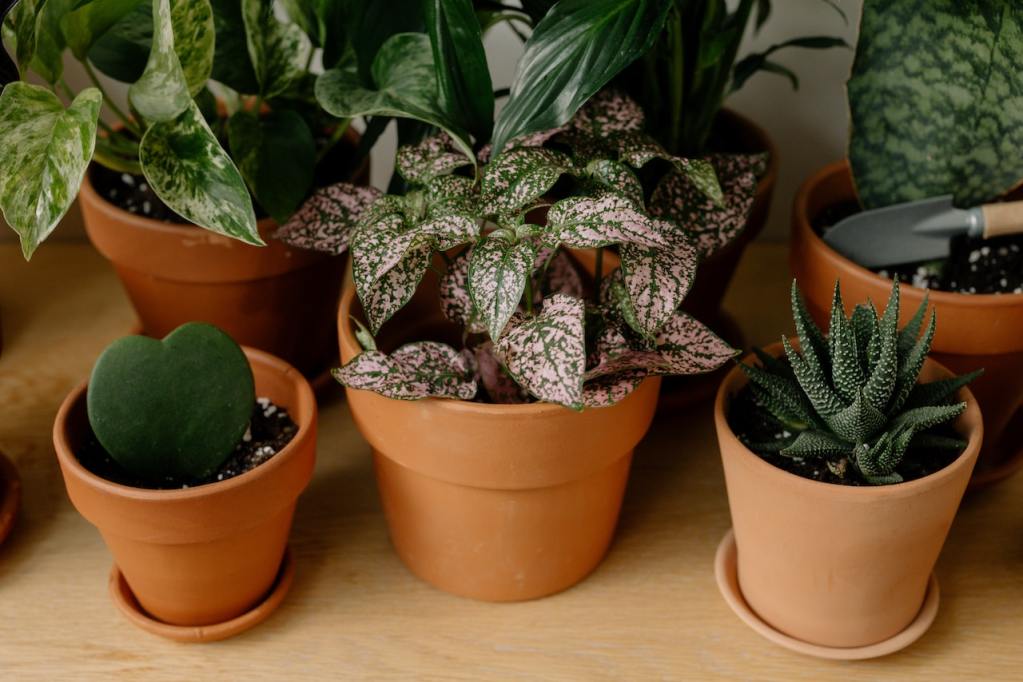
Are they high-maintenance plants?
Also known as Hypoestes phyllostachya, the polka dot plant requires some attention to its watering and humidity needs. However, these plants are generally considered low-maintenance plants. With general care and a proper growing environment, they can thrive and add a vibrant touch to your indoor space.
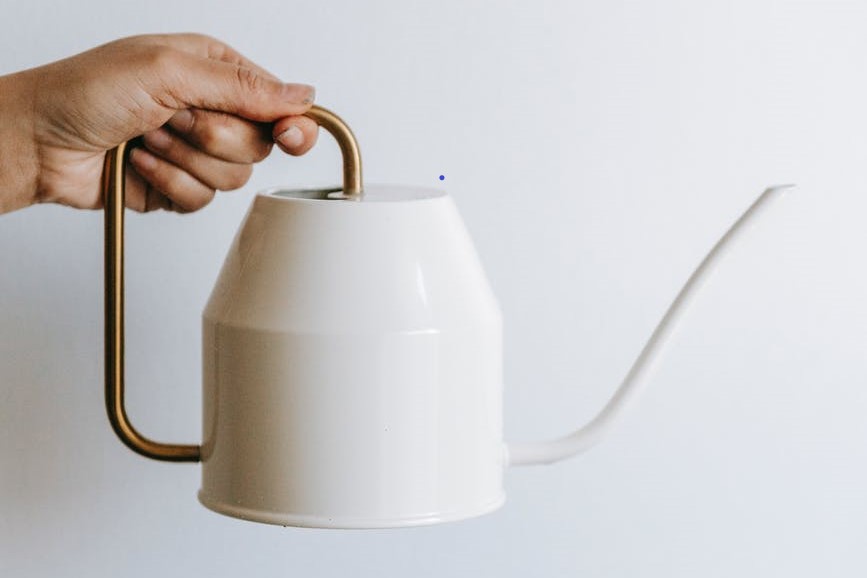
How do you care for a polka dot plant when it’s indoors?
If you want to enjoy that colorful foliage of these beautiful plants inside your home, you’ll just need to pay close attention to your polka dot plant and give it the care it needs, when it needs it.
How often should I water my polka dot plant?
Root rot is a common concern with houseplants and it occurs when the roots are sitting for too long in water. Polka dot plants don’t like to be over- or under-watered, as they’ll either get root rot or they’ll dry up if they are watered improperly. They do need to be watered fairly frequently, but watering on a strict schedule can lead to too much or too little water. It’s better to let the plant tell you when it needs water. Polka dot plants don’t like to dry out completely, so water yours when only the top half-inch of the pot’s soil is completely dry.
How much light do polka dot plants need?
These beauties love bright, indirect sunlight, but they don’t fare well in either extreme, like low-light conditions or long hours of direct sunlight. The best place to set up your polka dot plant is near an east- or south-facing window so it can soak up as much natural light as possible without being in the sun’s direct rays for too long.
How and when to fertilize a polka dot plant
Polka dot plants are known to be heavy feeders, and they need regular fertilizing during their growing period between spring and fall. Use an organic plant fertilizer once a month during the warmer season to promote new growth and keep your polka dot plant well-fed.
Temperature and humidity levels for your polka dot plant
Since it’s native to Madagascar, the polka dot plant prefers high temperatures and humidity. A temperature above 70 degrees F should be sufficient, but polka dot plants prefer humidity levels around 50%, which is on the high end of the average home’s humidity.
Consider running a humidifier in the room or misting the leaves occasionally. You can also set the plant on a tray filled with water and pebbles to boost the humidity around the plant. Just be sure the water isn’t touching the bottom of the planter, so root rot is avoided.
Prune for a bushier polka dot plant
Polka dot plants easily become leggy when growing conditions aren’t perfect, so you may need to do some pruning to make your plant a bit bushier. Cut or pinch off the top two leaves every week to promote growth and make your plant fuller. If you start to see blooms, make sure you prune them off right away. Flowers are nice, but once flowering is finished, the plant will start to die or go dormant.
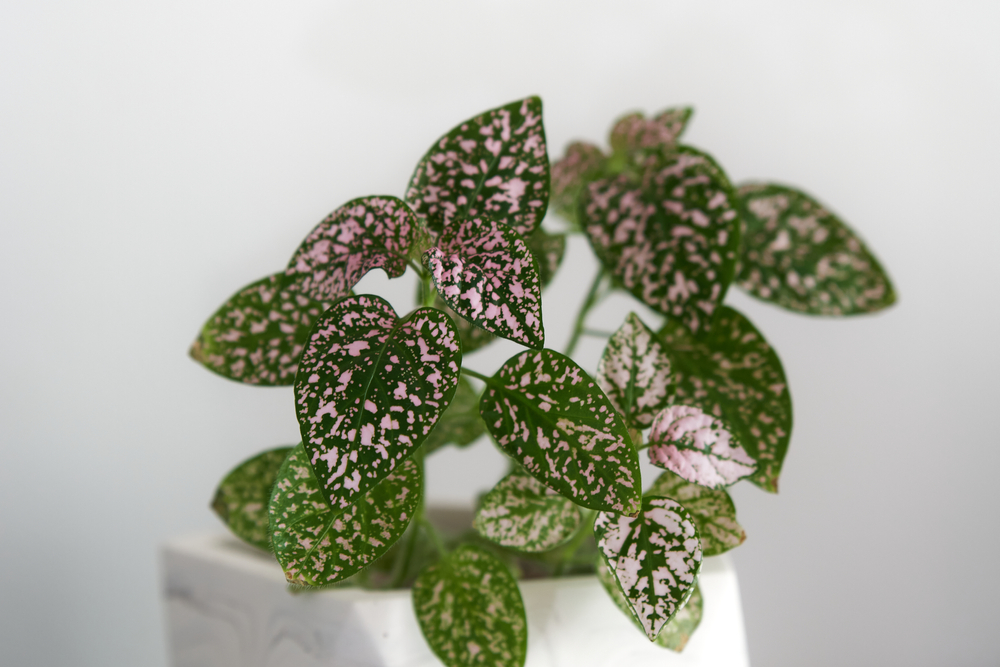
What are some common issues with polka dot plants?
Since it’s a finicky plant, you may see signs of distress at some point in the life of your polka dot plant. You don’t have to panic as long as you address the issues right away. That’s why it’s important to pay regular attention to the needs of your polka dot plant. Here are some common issues you might see.
The plant gets leggy
As mentioned, polka dot plants get leggy quickly when conditions aren’t premium, and the culprit is usually that it’s not getting enough light. Move your plant to a brighter location, and keep to a tight schedule of pruning to promote new growth.
Colors on leaves fade
Another issue with too little light is that a polka dot plant may start to fade in color. If its location is shady or doesn’t have bright light, move it to a brighter location. If it’s been in direct sunlight, however, the culprit may be that it’s getting too much sun. If that’s the case, move the plant to a location with a bit less light.
Brown or dry, curling leaves
Unfortunately, polka dot plant leaves go straight from colorful to brown without the warning signs of yellowing first. A brown leaf (or several) could be the result of many different culprits, including:
- Too little water
- Hard water
- Too little light
- Too much fertilizer
- Not enough humidity
- Too much direct sunlight
In order to find the culprit, start by checking the soil’s moisture and adjusting your watering and misting schedule if it’s too dry. Try using distilled or filtered water for a while as well. Then, examine the light conditions in the room and make adjustments to your polka dot’s placement. If more leaves continue to brown, skip the next fertilizing session and give the soil a good soak to remove some of the excess fertilizer.
Polka dot plants are a beautiful addition to any indoor space, particularly because of their colorful foliage. While they’re gorgeous, these plants tend to be demanding, and diligence is needed when caring for them. As long as you’re keeping an eye on your polka dot plant and adjusting your care routine based on its needs, it will flourish indoors like a champ.

